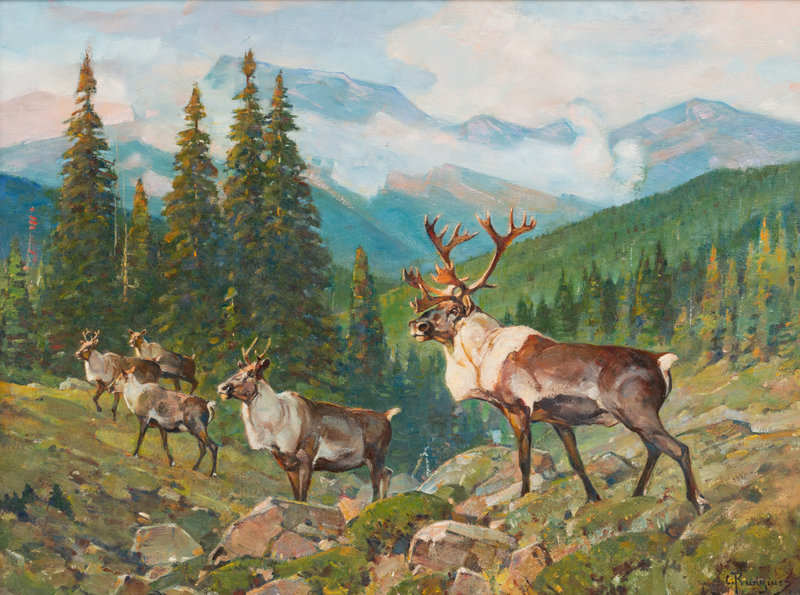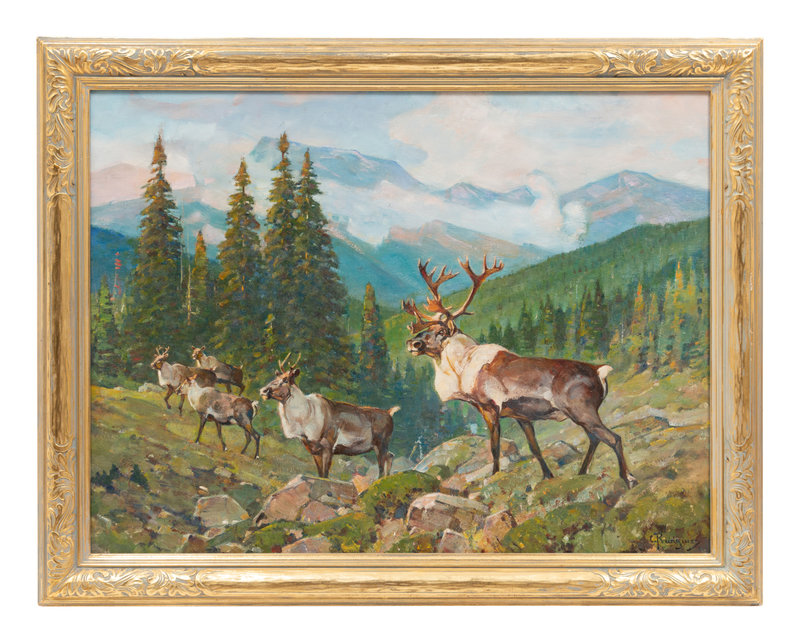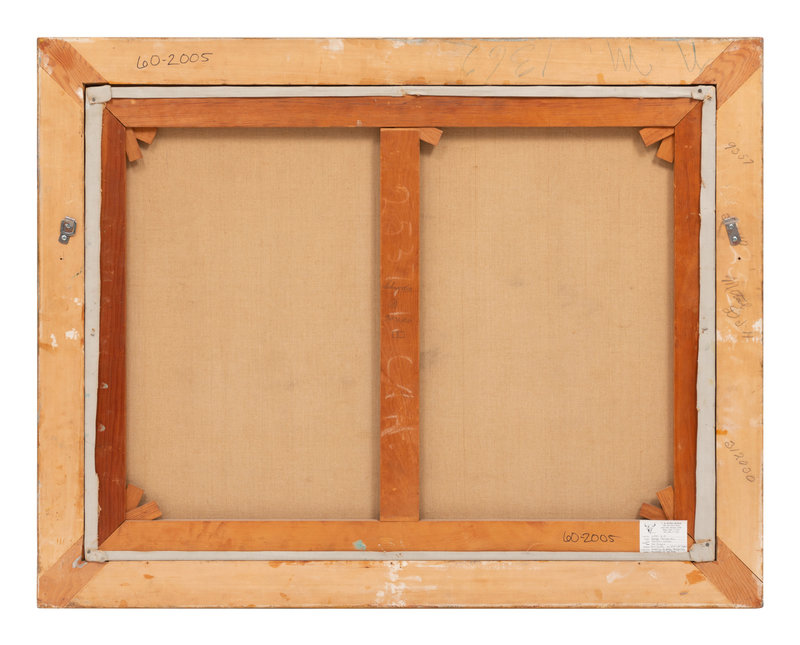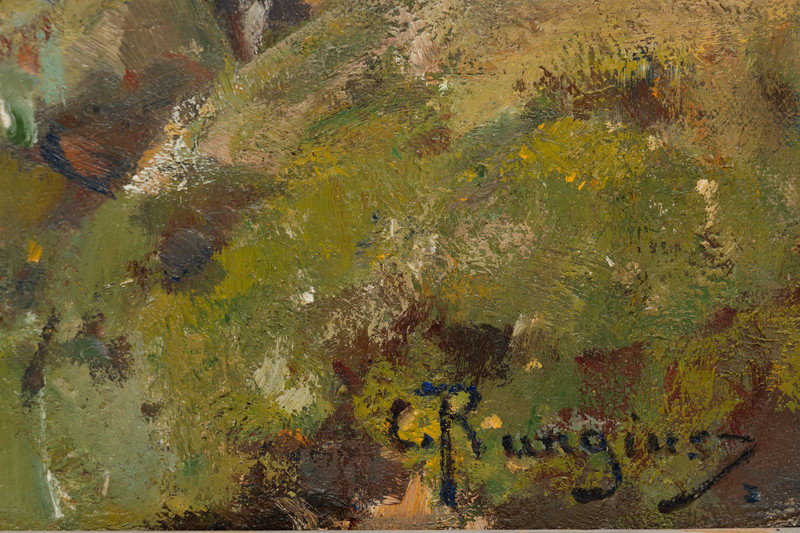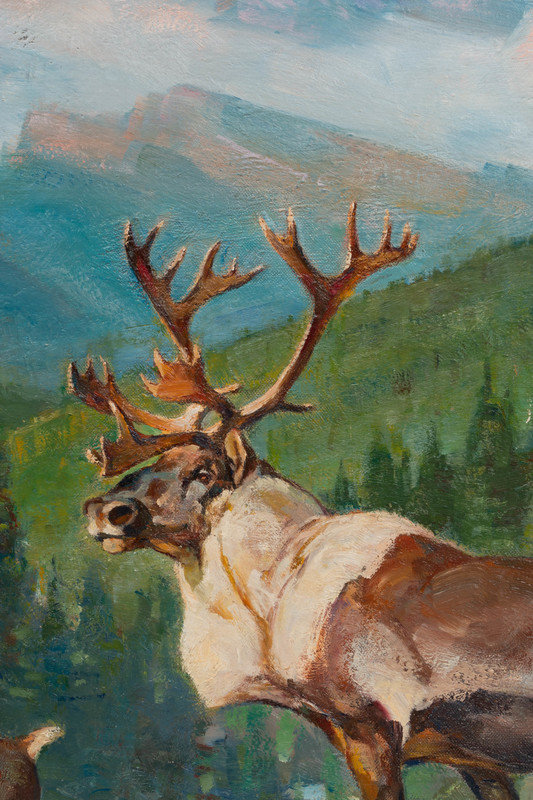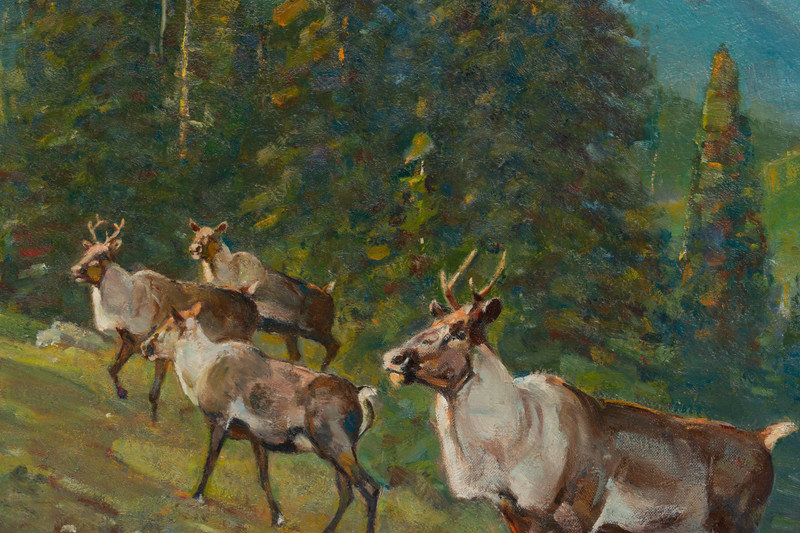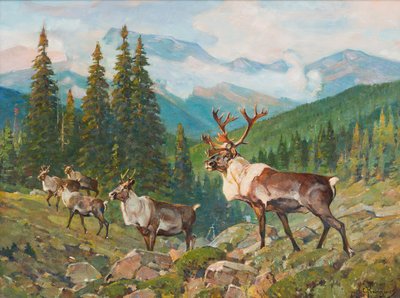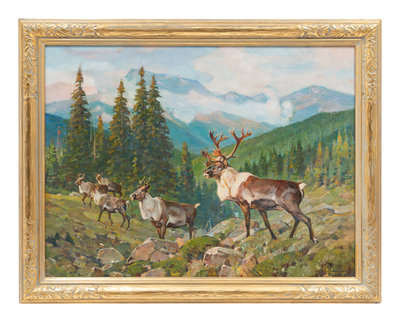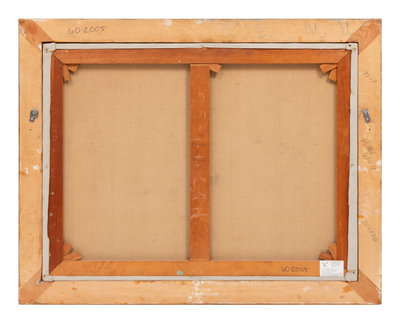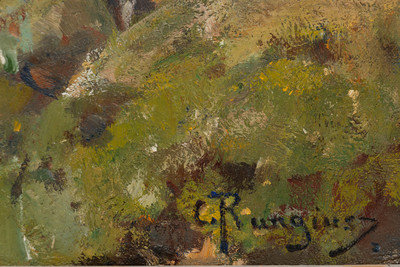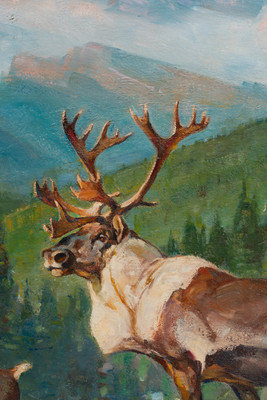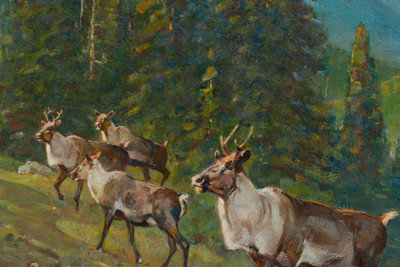Condition Report
Contact Information
Auction Specialist
Lot 334
Carl Clemens Moritz Rungius
(American, 1869-1959)
Mountain Caribou
Sale 951 - Western Art, including Contemporary Native American
Nov 4, 2021
10:00AM MT
Live / Denver
Own a similar item?
Estimate
$200,000 -
300,000
Price Realized
$368,750
Sold prices are inclusive of Buyer’s Premium
Lot Description
Carl Clemens Moritz Rungius
signed C. Rungius (lower right)
30 x 40 inches
Property from Palm Springs Art Museum Sold to Support the Care of Collections and the George Montgomery Fund for Acquisitions
(American, 1869-1959)
Mountain Caribou
oil on canvas
signed C. Rungius (lower right)
30 x 40 inches
Property from Palm Springs Art Museum Sold to Support the Care of Collections and the George Montgomery Fund for Acquisitions
